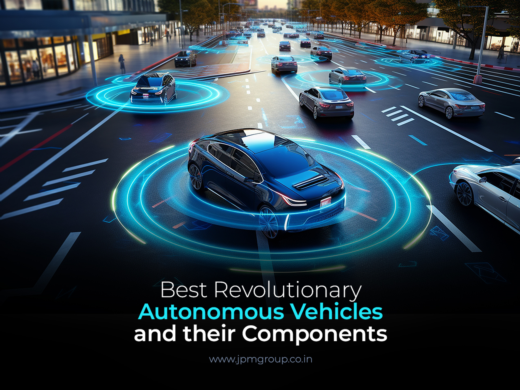
blog address: http://www.blog-directory.org/Verify.aspx?ID=644e8392-c999-4f3c-9ca1-04cf933ea487
blog details:
Autonomous vehicles (AVs) are revolutionizing the transportation industry, promising a transformative shift toward safer, more efficient, and highly innovative mobility solutions. As technology, electrification, and safety systems advance, autonomous vehicles are no longer a concept of the distant future but a fast-approaching reality.
In this blog, we will explore the evolution of autonomous vehicles, the levels of autonomy, and the key considerations driving their development.
Understanding the Future of Self-Driving Cars
The rise of self-driving cars marks an exciting transformation in the automotive industry. Combining advanced driver assistance systems (ADAS) with artificial intelligence (AI), these vehicles are paving the way toward a world where human intervention in driving may no longer be necessary.
The idea of cars navigating and operating independently is both fascinating and promising. Innovations in this field are set to redefine how we live and travel, with a focus on improving safety, convenience, and sustainability. However, achieving this vision requires significant technological advancements and robust safety measures to ensure reliability and build public trust.
Today’s autonomous vehicles already feature capabilities like lane centering and adaptive cruise control. But achieving full autonomy necessitates meeting rigorous standards like ISO 26262, which addresses functional safety in areas such as cybersecurity, Model-Based Design (MBD), and data integration. These measures are critical for ensuring reliable vehicle performance and fostering confidence in the technology.
---
### **What is Vehicle Autonomy?**
Vehicle autonomy refers to the ability of a vehicle to perform tasks independently with minimal human input. Achieving this level of independence relies on cutting-edge technologies, including:
- **Artificial Intelligence (AI):** Enables vehicles to simulate real-world scenarios and make data-driven decisions.
- **Mechatronics:** Integrates mechanical and electronic systems to enhance vehicle functionality.
- **LiDAR Technology:** Light Detection and Ranging (LiDAR) sensors gather environmental data to help vehicles navigate effectively.
These technologies empower autonomous vehicles to operate in both predictable and unpredictable scenarios, paving the way for safer and more efficient transportation.
---
### **Levels of Vehicle Automation**
The Society of Automotive Engineers (SAE) outlines six levels of vehicle automation, from no automation to full autonomy:
- **Level 0:** Basic warning systems like blind-spot monitoring.
- **Level 1:** Single support features such as lane centering or adaptive cruise control.
- **Level 2:** Partial automation combining features like steering and braking.
- **Level 3:** Conditional automation allowing vehicles to operate independently under specific conditions.
- **Level 4:** High automation with no human intervention required during operations.
- **Level 5:** Full automation enabling vehicles to function without human input under all conditions.
Currently, most autonomous vehicles operate at Level 2, with ongoing innovation aiming to achieve higher levels of autonomy.
---
### **Benefits of an Autonomous Future**
The widespread adoption of autonomous vehicles brings numerous benefits:
1. **Enhanced Safety:** Reducing accidents caused by human error with precise, data-driven decision-making.
2. **Improved Traffic Flow:** Coordinating vehicle movements to minimize congestion.
3. **Environmental Benefits:** Lowering emissions through optimized driving patterns and the integration of electric vehicles (EVs).
4. **Convenience:** Offering seamless ridesharing and fleet management services.
The autonomous future also holds the potential to revolutionize logistics and mobility through innovations like autonomous e-bikes and semi-trucks.
---
### **Challenges and Considerations for Full Autonomy**
Achieving full autonomy comes with significant challenges:
- **Supply Chain Issues:** Disruptions in the availability of raw materials for key components.
- **Economic Impacts:** Job displacement in traditional transportation roles.
- **Engineering Complexities:** Managing vast amounts of data for decision-making and navigation.
Collaboration among manufacturers, government agencies, and experts is essential to address these challenges. Transparent testing and validation processes, combined with regulatory compliance, are key to building trust and accelerating progress.
Conclusion
The journey toward a fully autonomous future is as challenging as it is exciting. While timelines remain uncertain, the steady integration of autonomous features into vehicles reflects significant progress. Through innovation, stringent safety measures, and collaborative efforts, the future of self-driving cars promises to transform how we move, connect, and interact in the modern world.
With boundless opportunities on the horizon, autonomous vehicles are set to redefine the transportation landscape, offering a glimpse into a safer, smarter, and more sustainable future.
keywords: jpm automobile
member since: Jan 08, 2025 | Viewed: 63